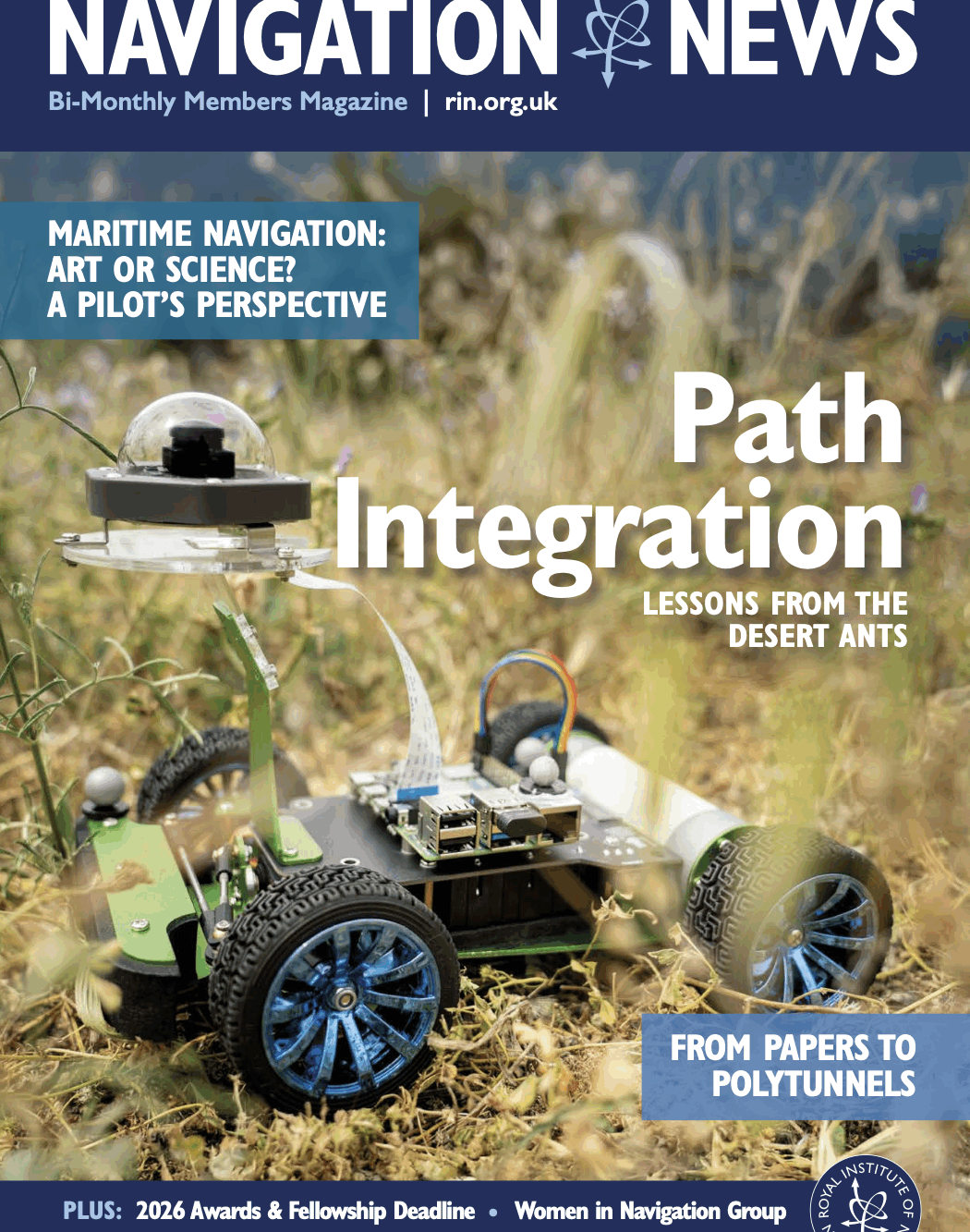[Navigation News from The Royal Institute of Navigation] Path Integration: Lessons from the Desert Ants
Article published on 5 November 2025

3 Desert Ants, 3 Continents (What we can learn from them)
Cataglyphis fortis (Tunisia), C. velox (southern Spain), and the
Melophorus bagoti (central Australia) have mastered the art of precise path integration. These remarkable ants can venture out to forage for food hundreds of meters away from their nest. Equipped with a natural step counting mechanism and a time compensated celestial compass, they navigate using the sun’s position and the UV polarization patterns in the sky. It’s impressive, considering they operate with brains that consist of just 500,000 neurons, in stark contrast to the 85 billion neurons found in humans. Their nests are simply small holes dug into the ground. While seeking dead insects during the sweltering heat of midday – which helps them avoid both predators and competition – soil temperatures can soar to a scorching 70°C (158°F). Cataglyphis ants rely on two primary navigation methods: path integration, which allows them to navigate without landmarks, and
view-based landmark guidance, enabling them to memorize, recall,
and follow various routes through their complex environments.
Social insect foragers are expert navigators. To accurately localise the
nest at the end of a foraging journey, visual cues, wind direction and also
olfactory (smell) cues need to be learnt. Using a combination of innate
navigational strategies and learnt information from their environment.
Given the availability of a rich array of cues, from idiothetic (self-motion) information to input from sky compasses and visual information
through to olfactory and other cues (e.g. gustatory (taste), magnetic, anemotactic (wind) or thermal) it is no surprise to see multimodality in
most aspects of navigation. We show that despite their impressive homing accuracy, ants returning from long foraging journeys face a mortality rate of up to 20%. Our data suggest that the desert ant builds its own landmark, elevating their nest entrance on purpose in a featureless environment to increase its chances of successful homing and survival. M. bagoti, which inhabits a visually cluttered environment; whereas the relatively featureless terrain traversed by C. fortis may have led them to optimize for path integration.
Robotics
This work focuses on animal behavior, bio-inspiration, biomimicry, and bio-inspired robotics to create precise long-term navigation systems which operate without recourse to man-made infrastructures (e.g. GPS or 5G
networks). This allows us to explain perception-action coupling to understand animals’ spatial orientation mechanisms and to apply them to robotics. The researchers drew inspiration from the Cataglyphis fortis!
This press article was written by David Wagner, member of the Outdoor Adventure Navigation Group (OANG).